Discover the tangy and nutrient-packed taste of homemade pomegranate molasses, a winter staple perfect for adding brightness to your homestead’s seasonal dishes. Learn how to make it at home with our easy recipe!
There's nothing quite like the burst of flavor homemade pomegranate molasses brings to winter dishes, salads, and roasts. Not only is it tangy and delicious, but it's also packed with nutrients, making it a seasonal favorite here on the homestead. When winter rolls around, I make it a point to incorporate foods that boost our immune systems, and pomegranate molasses does just that with its high vitamin C and potassium levels.
Making homemade pomegranate molasses is also a fun, hands-on activity with the kids. They love helping me open the pomegranates to extract the seeds (or arils). Together, we can turn these beautiful, ruby-red seeds into sticky, sweet-tart molasses that we'll use throughout the season. This process brings us together in the kitchen and allows us to enjoy pomegranate's health benefits.
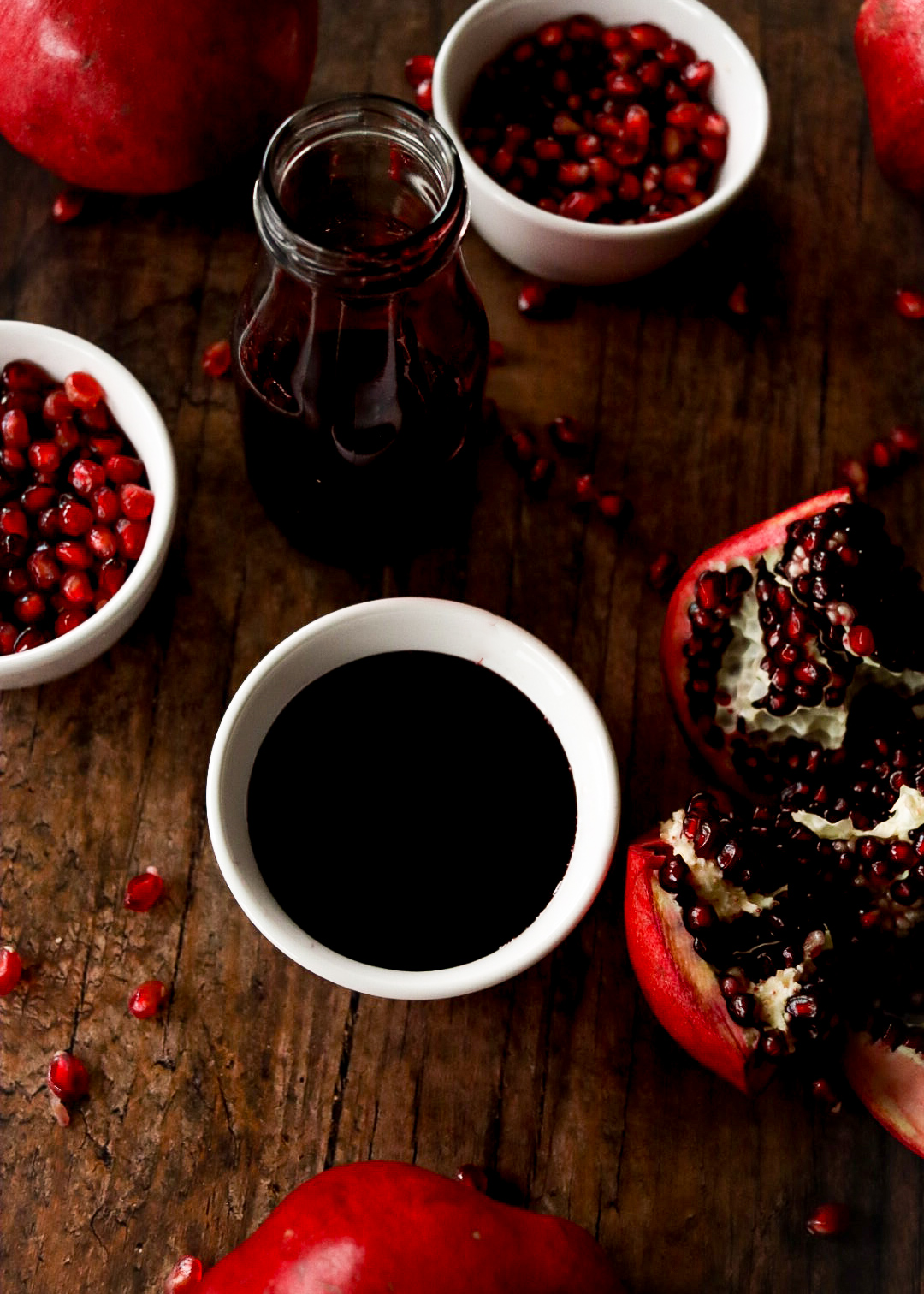
California Pomegranate Season
Pomegranates are in their peak season in the fall and early winter, and most come from California, the U.S.. Pomegranate trees thrive in California's hot, dry summers and mild winters, so you'll find them on many homesteads and farms there. October to January is prime pomegranate time, and we like to stock up. Whether buying pomegranates from a local market or harvesting them straight from your homestead, it's the ideal time to make fresh pomegranate molasses.
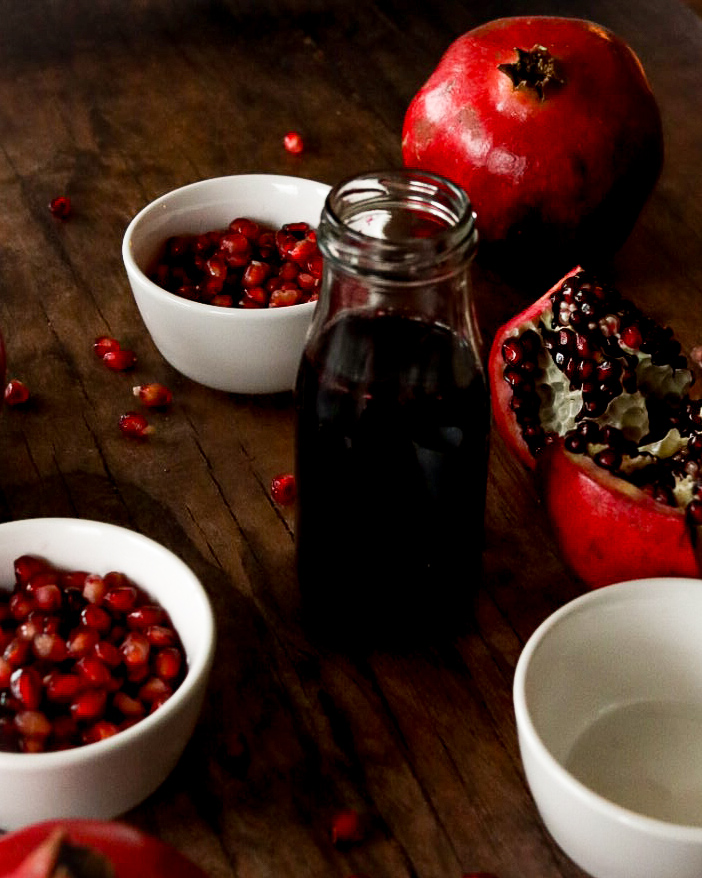
How Pomegranates Boost Your Immune System
Pomegranates aren't just delicious; they're nutrient powerhouses. Packed with antioxidants, they help reduce inflammation and fend off cold-weather germs. Vitamin C and potassium are just a few nutrients they bring to the table and are also high in fiber. Regularly incorporating pomegranates into your meals, whether in salads or over roasted veggies, adds a health boost to keep everyone feeling their best through winter.
Why Pomegranate Molasses?
If you've never tasted pomegranate molasses, think of it as a thicker, tangier version of syrup with a complex sweetness. It's commonly used in Middle Eastern and Mediterranean cooking, adding a rich, almost floral flavor to savory and sweet dishes. Pomegranate molasses can enhance the flavor of meats, stews, salad dressings, and even desserts. Once you try it, you'll see why it's a unique addition to any pantry!
Making pomegranate molasses at home is also surprisingly simple. It results in a beautifully concentrated flavor that's fresher than store-bought varieties. Plus, if you've ever bought pomegranate molasses at the store, you know it can be pricier. Homemade is a fraction of the cost and feels much more rewarding.
How to Get Arils Out of a Pomegranate
Getting the seeds, or arils, out of a pomegranate often keeps people from using this fruit, but a few easy tricks make the process a breeze. Here's a method that my kids and I like to use:
- Score and Break: Cut the pomegranate in half, then score the outer skin into sections without cutting it through.
- Water Trick: Submerge each half in a bowl of water. This prevents juice from spraying and keeps your hands from getting stained.
- Gently Release: Pull apart the scored sections, using your thumbs to release the seeds underwater. The seeds will sink to the bottom while any bits of membrane float to the top.
- Drain and Rinse: Drain the seeds and rinse if needed, and they're ready for eating, cooking, or making molasses.
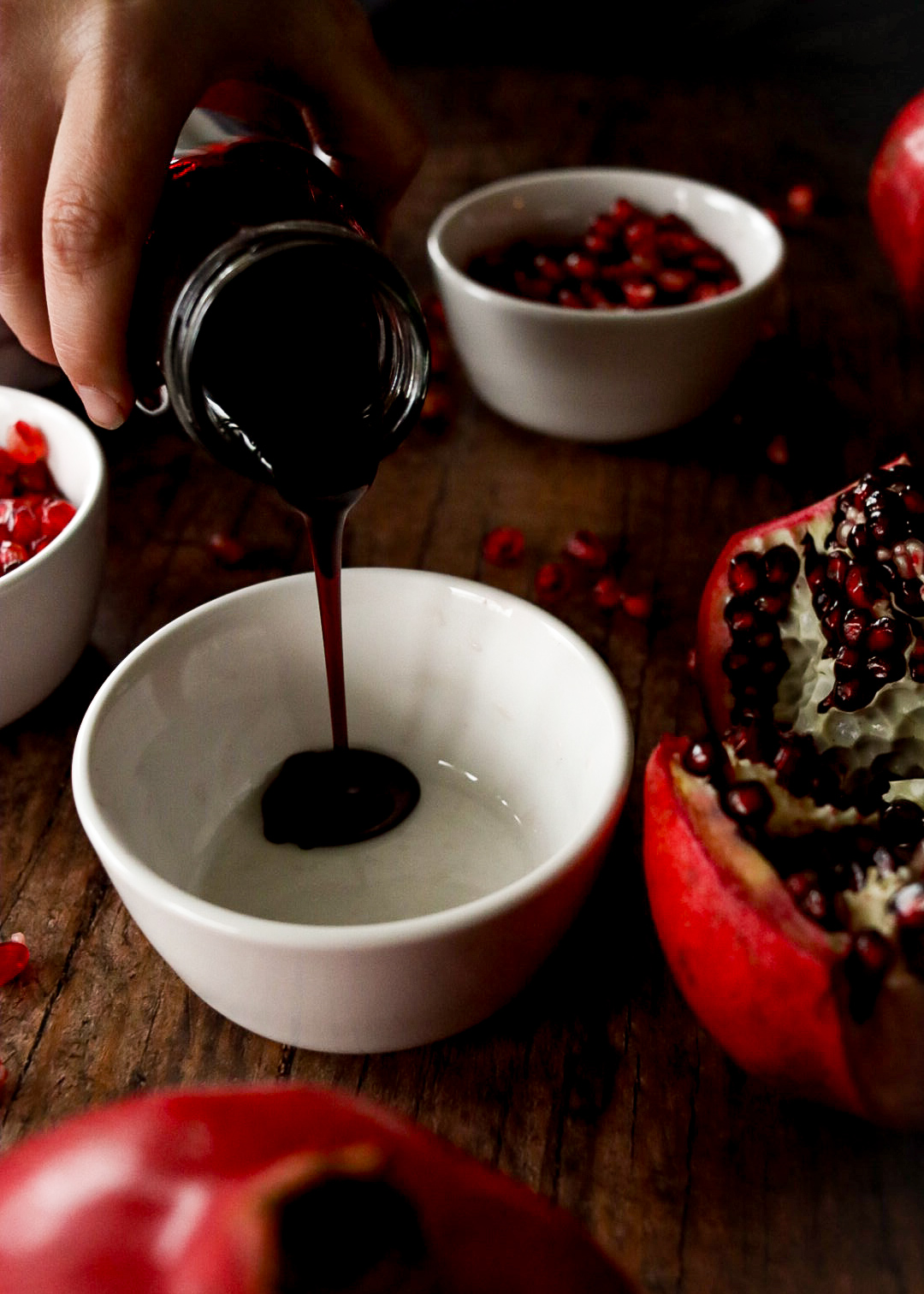

How to Make Pomegranate Molasses
Once you've got your arils ready, making pomegranate molasses only requires a few simple steps and patience as it reduces on the stove. Here's what you'll need:
- Fresh pomegranate juice (you can juice your arils or buy fresh juice)
- Sugar (optional, depending on how sweet you'd like it)
- A splash of lemon juice
- Juice the Arils: If you're starting with fresh arils, you'll need to juice them. To remove the pulp, wash them lightly in a blender, then strain the juice through a fine-mesh sieve.
- Reduce on the Stove: In a saucepan, combine your fresh pomegranate juice, a bit of sugar if desired, and a touch of lemon juice. Simmer over medium-low heat, stirring occasionally, until the mixture has reduced by about half and coats the back of a spoon.
- Cool and Store: Let the molasses cool, then pour it into a clean jar. Store it in the refrigerator, and it will keep for several months.
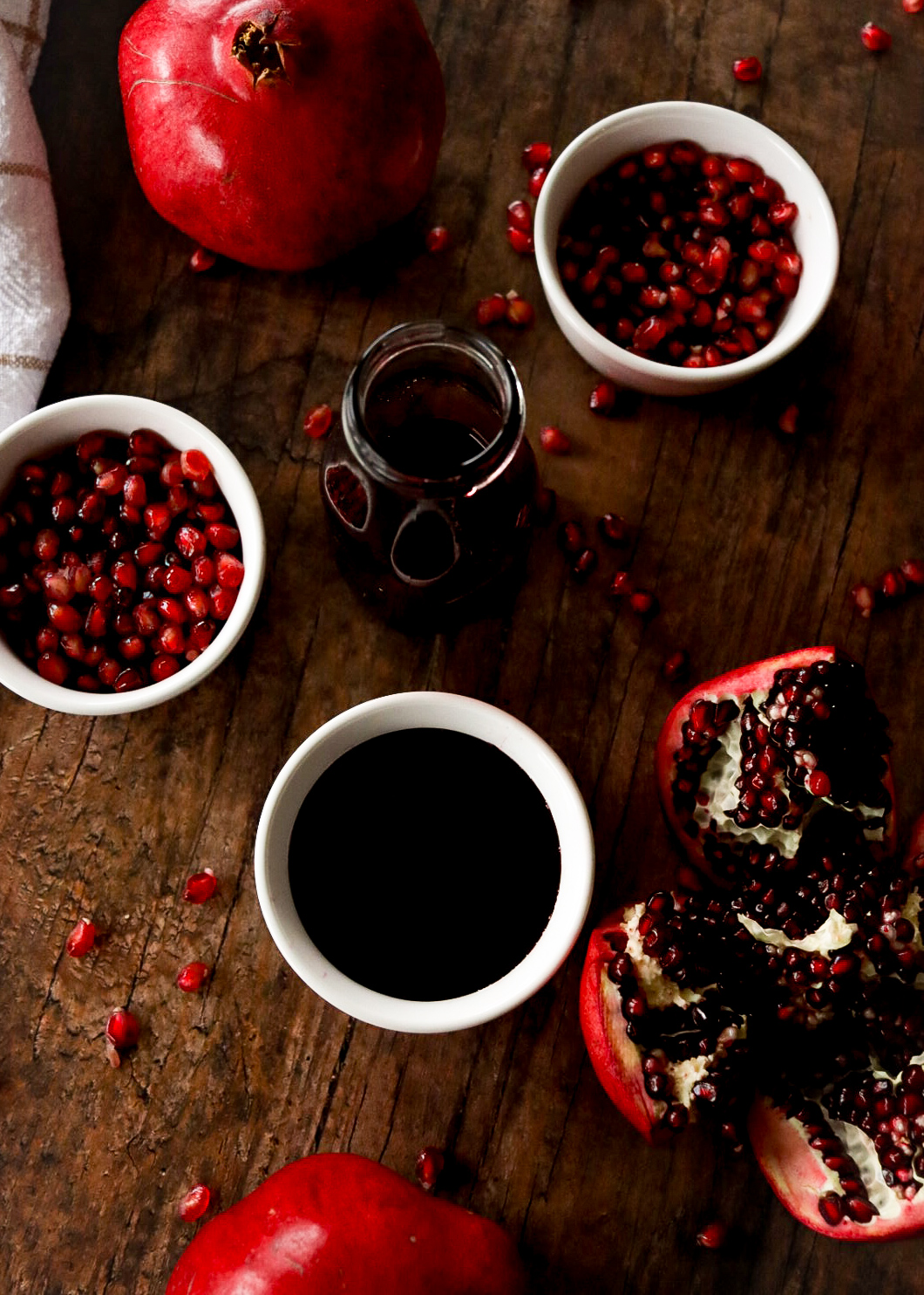
Enjoying Pomegranate Molasses in Winter Cooking
There's much to explore with pomegranate molasses, from drizzling it over roasted meats and veggies to use it as a tangy salad dressing base. It's delicious on warm, hearty winter dishes, and its tangy brightness livens up the rich flavors we often crave in colder months. Add a bit to desserts or swirl it into yogurt for a fruity twist.
This is truly a treat that makes winter meals a bit brighter and healthier. Enjoy this easy recipe with your family, and if you try it, I'd love to hear your thoughts.
How does it add a burst of flavor to your seasonal dishes?
Print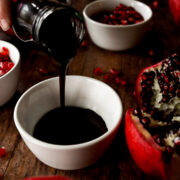
Homemade Pomegranate Molasses
Description
Pomegranate molasses is a thick, tangy, slightly sweet syrup from pomegranate juice. It’s commonly used in Middle Eastern cuisine and is perfect for marinades, salad dressings, and adding flavor to various dishes.
Ingredients
- 3 cups pomegranate juice (about 4-5 large pomegranates, juiced)
- ½ cup granulated sugar
- ¼ cup fresh lemon juice
Instructions
- Combine the pomegranate juice, sugar, and lemon juice in a medium saucepan.
- Place the saucepan over medium heat and stir until the sugar has dissolved. Reduce the heat to low, allowing the mixture to simmer gently.
- Simmer the mixture for about 45-60 minutes, stirring occasionally, until it has reduced by about 75%. The liquid should thicken and resemble syrup.
- To test for doneness, dip a spoon into the syrup. If it coats the back of the spoon and drips slowly, it’s ready. The molasses will thicken further as it cools.
- Remove the saucepan from the heat and allow the pomegranate molasses to cool completely. Pour into a clean, airtight jar or bottle and store it in the refrigerator.
Notes
To create fresh juice: Blender: Place the seeds in a blender and pulse a few times to release the juice. Avoid over-blending, as the seeds can become bitter. Strain the mixture through a fine mesh strainer or cheesecloth to remove the pulp. Manual (citrus press): Place the seeds in a citrus press or between two spoons and squeeze to extract the juice.
- Category: Dressings
- Cuisine: Middle Eastern

Leave a Reply